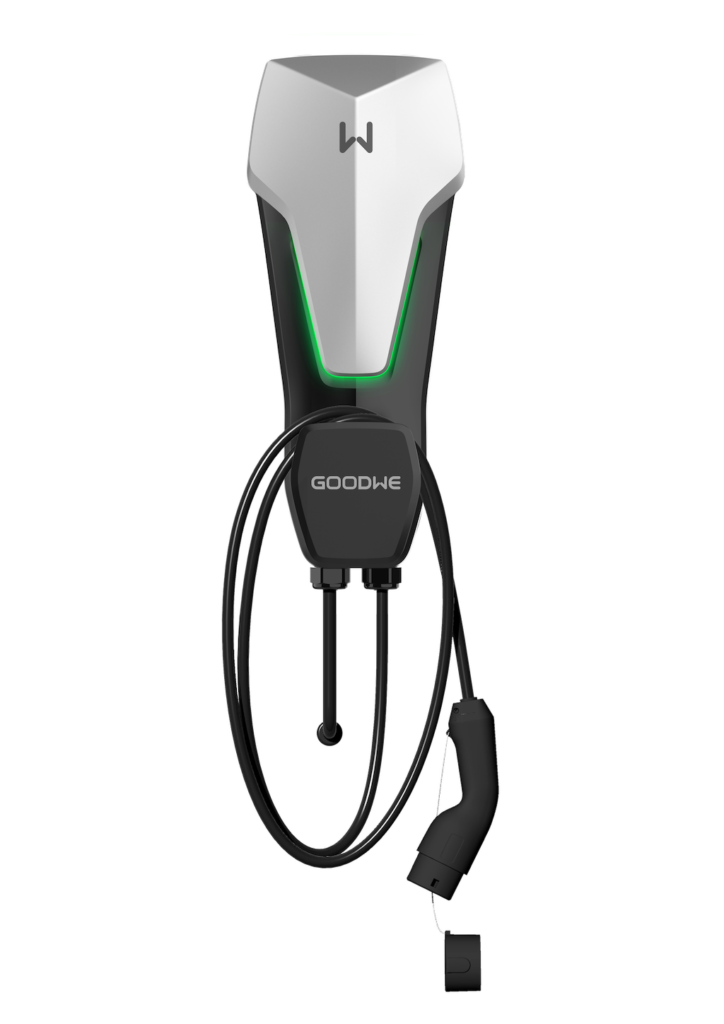
Theodorik Leao, Technical Sales Manager at GoodWe, outlines the implications of the Electric Vehicles (Smart Charge Points) Regulations and suggests why it makes the most sense to power EV chargers with solar electricity as we go toward smart charging.
In recent years there has been a sharp increase in the use of electric cars (EVs). More than a quarter of a million EVs are already on UK roads, and sales of plug-in vehicles have risen to all-time highs, with 327,000 registered last year alone, a 77% increase from 2020, according to gov.uk.
The growth of electric vehicles is a great development for the environmental movement. The challenge is how to power all these vehicles without adding to the grid’s already excessive load. At the same time, there needs to be a rapid increase in charging stations to accommodate the steep uptake in EVs. In a report by carwow, even though the rise in EVs per charge point between 2020 and 2021 was 7.3 – ranking it as the seventh biggest increase worldwide – it noted that the public charging infrastructure in the UK has not been able to keep up with the increase in EVs on the road over the past year.
Smart charging
A topic that has been hotly contested for a while, the government has only just begun to address the integration of smart charging points for EVs. Legislation and the most recent requirement for charging points to have smart functionality are two ways the issue is being tackled. It is one of a number of improvements outlined in the recently passed Electric Vehicles (Smart Charge Points) Regulations 2021, which took effect on June 30, 2022.
Simply put, this means that having an EV charger installed on your home is no longer sufficient. Your unit must instead feature smart functionality. Smart chargers are required for all new EV charging points in all residential and commercial buildings in the UK in order to ease the load on the grid and, whenever possible, these need to be powered through renewable energy sources.
Additionally, every new construction must come with a charging station as standard, and some local councils have even demanded that recent developments built before the legislation took effect have the chargers retrofitted to ensure they reflect the latest standards.
So what exactly does the concept of ’smart charging’ actually mean? It would be reasonable to assume that a charger should only charge at a consistent pace as specified by its rated output, but in reality it is a little more complex.
Smart charging refers to a charger’s ability to dynamically and continuously alter the charging power based on numerous parameters. This lowers the peak demand for electricity on the grid while also giving consumers the option to schedule the safe and efficient charging of their vehicle’s batteries.
A single or three phase AC charger like GoodWe’s EV charger, for instance, comes in 7kW, 11kW, and 22kW models and can give 7,000 watts, 11,000 watts, and 22,000 watts of power, respectively. The unit is fully protected, including overvoltage and undervoltage protection, AC surge and overload protection.
It will be interesting to see if the situation can be fixed even with smart charging capabilities. The UK’s power grid is under a great deal of stress, as was previously mentioned, with several regions already at capacity and unable to handle any further load.
Solar power
It is obvious that there needs to be a trend toward self-sufficient energy sources to protect against the aforementioned scenario. Because of this, the government has mandated that, under the new legislation, smart chargers must, whenever possible, be powered by renewable sources.
Solar power is most sensible in this situation. Financially speaking, while many might wish to transition to electric cars, they could be worried about skyrocketing electricity costs. These costs can be reduced by solar energy, and given the ongoing increases in energy prices, the payback period for a full solar system for a home (panels, inverter, and batteries) can currently be as short as six- to seven years. This assumes that a typical 2-3-bedroom home will incur material and labour costs of £8,000 to £10,000 for a solar installation, and an annual electricity bill of £1,600 once the price cap is raised in October.
Smart EV charging stations are more efficient, dependable, safe, and adaptable to diverse user needs from an operations standpoint. By connecting disparate e-mobility networks, this solution allows simple remote monitoring for commissioning, operation, and maintenance throughout the charger’s lifecycle. Smart EV charging also enables more precise and equitable cost allocation for multi-tenancy apartments, ensuring that tenants only pay for the services they actually use.
Adding to these benefits, the rise of hybrid inverters has made it possible for homes to start enjoying the advantages of solar electricity without having to pay the full upfront costs, together with intelligent EV charging and quicker payback times. By installing a hybrid, homeowners may power their appliances with solar energy and then subsequently add a battery that better satisfies their needs for power storage and cost. People may easily make the switch to solar power and spread out the cost whenever they see fit thanks to this ’halfway house’. Once a battery is installed, electricity generated from solar rays can be used overnight, stored for use on days with less sunlight, or used to keep the house operating in the event of a power outage.
Hybrids are a game-changer for installers and GoodWe’s range goes up to a maximum power output of 6kW – more than enough for most typical households. As the domestic market increases and their popularity rises, so too must installers’ expertise and capacity to operate this new generation of inverter competently.
A smarter future
As we move faster toward an electrified future, there will definitely be hiccups. But now that the new laws for EV charging points are in place, there is at least a solid base to build on, with standards and guidelines to strive towards.










